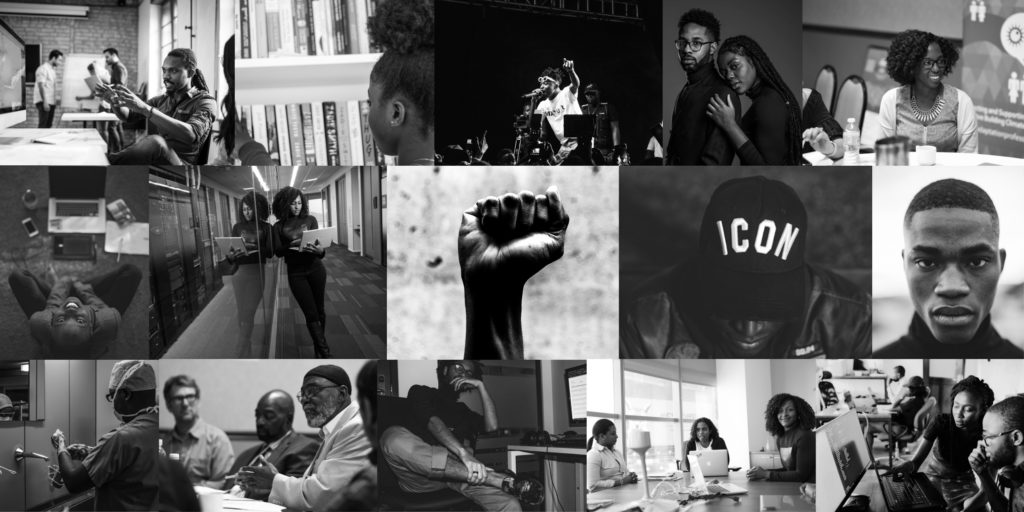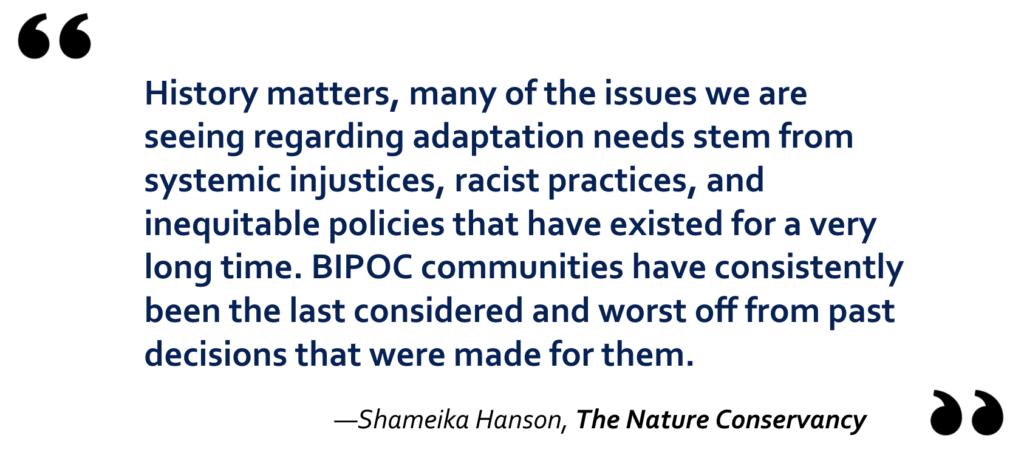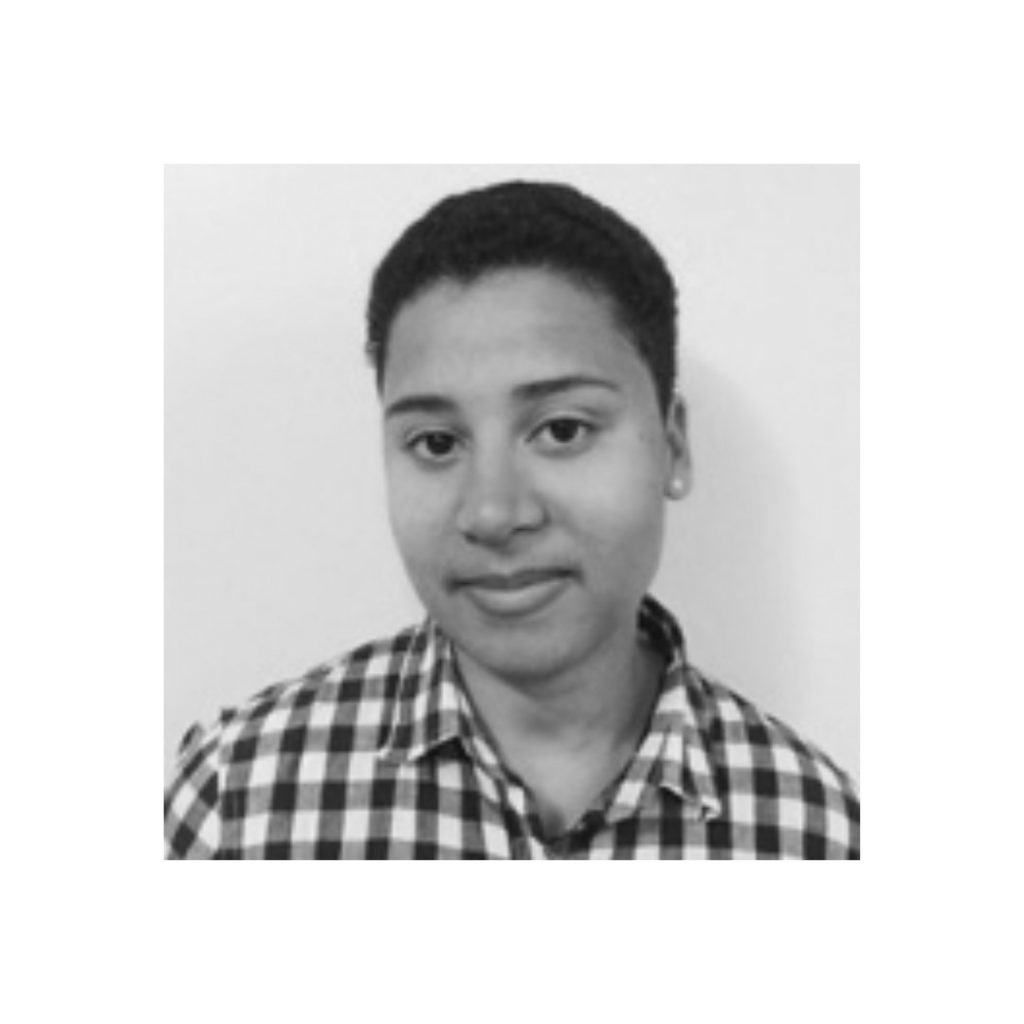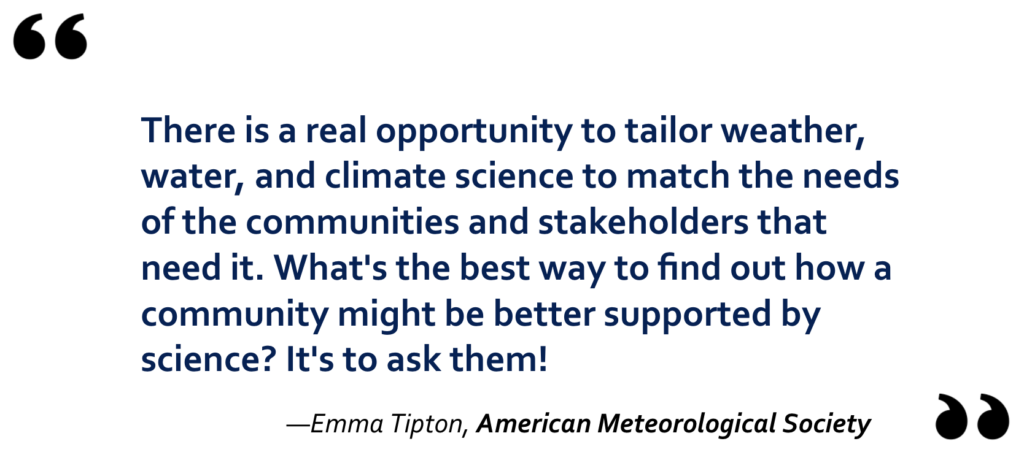Celebrating Black Excellence in Adaptation

This Black History Month, ASAP is celebrating the excellence that our Black members bring to the field. Among them are Shameika Hanson, Community Protection Specialist at The Nature Conservancy, and Emma Tipton, Policy Associate at the American Meteorological Society. We’re honored to share their reflections with our community.
Read on to learn how they are centering community perspectives in adaptation projects, science applications, and decision-making, and how they’re harnessing their involvement in networks like ASAP to share and expand their knowledge.
Shameika Hanson
Emma Tipton
Shameika Hanson
Community-Led Solutions to Benefit People and Nature

Shameika Hanson has been an active ASAP member for years. She works as Community Protection Specialist at The Nature Conservancy, where she seeks to work with communities to identify best practices to address flood issues throughout NY state.
A founding leadership team member of ASAP’s Justice, Equity, Diversity, and Inclusion (JEDI) Committee, Shameika discusses how she brings communities to participate into The Nature Conservancy projects, how her involvement at ASAP has allowed her to further the reach of her knowledge, and how her lived experience has made her a better adaptation professional.

Share a story with us that illustrates your work at The Nature Conservancy. What do you find meaningful about it?
At TNC I work as a Community Protection Specialist on our NY climate adaptation team where we are focused on addressing flood issues throughout the state of NY. Here we have identified that rising sea levels and other climate impacts will result in increased flooding in the state both coastal and inland. Due to this, our team seeks to work with communities to identify best practices for making way for water. Most recently, a small subset of this team worked to create and release a request for proposals (RFP) for community visioning post buyouts. This funding opportunity is just one way, among others, that we are seeking to provide communities with the resources and support they need to adapt.
How do you build strong equitable relationships with the communities you work with at The Nature Conservancy?
My work engaging communities at TNC changes in tandem with the needs of our projects. I begin all my relationships in communities with the local leaders. These leaders can be government officials, civic association leaders, clergy, or even well-known community organizers. These leaders and the residents are the experts of their community. I do not presume to know more about where they live, the issues they face, or solutions to address those problems. By listening to voices and perspectives from the community members, we are better able to support solutions that are beneficial to both people and nature.
How does identifying as Black/African-American impact your work?
I bring multi perspectives and experiences to my work that some of my white colleagues don’t have. I am a first-generation citizen from an immigrant family with parents who worked very hard to provide my middle-class upbringing in the suburbs of Long Island. Living in one of the most diverse yet segregated areas of the country, I have consistently had to navigate spaces where I felt uncomfortable, unwanted, or unqualified to be in. These experiences drive my desire to ensure all community members are heard, are seen, and feel as though they matter because they do.
Did you face any barriers to get to where you are right now? How did you navigate the predominantly white institutions in the climate space?
My Long Island upbringing prepared me for operating in spaces where I was the only person who looked like me. Though none have been perfect (academic or professional), I have learned, grown, and moved into better spaces with more supportive people. In all of these spaces, I have been fortunate enough to always have white allies, confidants, and/ or mentors. These people have helped me tremendously and have done everything from defend myself and BIPOC friends and colleagues from racist trolls online, to filing official complaints on my behalf when I have felt uncomfortable doing so. It isn’t always easy navigating these spaces so it is imperative to find people who understand what inclusivity truly looks like and who are willing to step up and speak out against bad actors.
How has your work as a JEDI Committee Leadership team member at ASAP helped you work towards a more equitable adaptation field?
At ASAP the JEDI Committee’s leadership team has worked to bring equity into adaptation nationally, well beyond my reach in NY. Working on documents such as our equity statement, code of ethics, and living guide has been a way for me to integrate my experience and knowledge beyond my team and work locally. Through my work with ASAP I have also been able to build relationships with professionals across the country, so we are better able to support one another and share best practices in real time. Since joining ASAP I have become an Advisory Board member of Mycelium Youth Network (an ASAP Organizational Member) and am a member of the justice and equity working group for the National Adaptation Forum (NAF).
What’s one piece of wisdom or advice you can share with the ASAP/adaptation community about pursuing racial justice in their adaptation work?
History matters, many of the issues we are seeing regarding adaptation needs stem from systemic injustices, racist practices, and inequitable policies that have existed for a very long time. BIPOC communities have consistently been the last considered and worst off from past decisions that were made for them, by people who did not have their best interests at heart. These communities have heartbeats, pulses, and though not without their issues need real investment and commitment from those doing work there. Remember that no matter who you are you can learn something from everyone.
Emma Tipton
Bringing Climate Science to Community Adaptation Practitioners

Meet Emma Tipton, one of ASAP’s newest members. Emma works as Policy Associate at the American Meteorological Society. Her interests include urban air quality and climate change adaptation efforts, particularly as they pertain to communities most impacted by these issues. Her current work focuses on developing actionable scientific assessments to support decision-making surrounding coastal resilience.
In this interview, Emma talks with ASAP about how she weaves communities’ perspectives into her work and what opportunities she sees in bringing science to the heart of policy.

In your professional experience, what are the opportunities to improve policy around coastal resilience and adaptation? How can science be translated into actionable policy?
Resilience strategies are not one-size-fits-all; every community has to work in ways that match their unique priorities, goals, and resources. But while communities are the best judges of their own resilience decisions, my work at American Meteorological Society involves determining how these decisions might be supported through advances in Earth system observations, science, and services. There is a real opportunity to tailor weather, water, and climate science to match the needs of the communities and stakeholders that need it. However, it is also important that science is situated within social and economic contexts in order to give a holistic picture.
How do you integrate a community’s perspective into your work? How do you bring to the table the perspective of different stakeholders?
My work is very much focused on bringing weather, water, and climate science to community adaptation practitioners and decision-makers. What’s the best way to find out how a community might be better supported by science? It’s to ask them! As a result, I am constantly in contact with coastal community members and adaptation providers, through individual conversations and roundtable discussions, in order to hear from as many different perspectives as possible. Many communities also have committee meetings on coastal or environmental issues and I drop in to listen when I can. The movement to the virtual space has been great in that regard!
What’s the importance of networks like ASAP for your professional practice?
Since entering the climate professional field, I have learned that there are a great number of formal and informal networks in place which are all working hard to help communities manage existing vulnerabilities and prepare for the future. However, these networks exist on a wide variety of scales and it is not always the easiest to find out about them and their work –especially as they might not have a large internet presence and we are in the midst of pandemic times. I have found ASAP invaluable in getting a sense of what’s out there and ensuring that I am not trying to reinvent the wheel. Attending member-led interest group meetings and looking through the ASAP member directory has helped me make connections in places that I doubt I would have stumbled across on my own.

